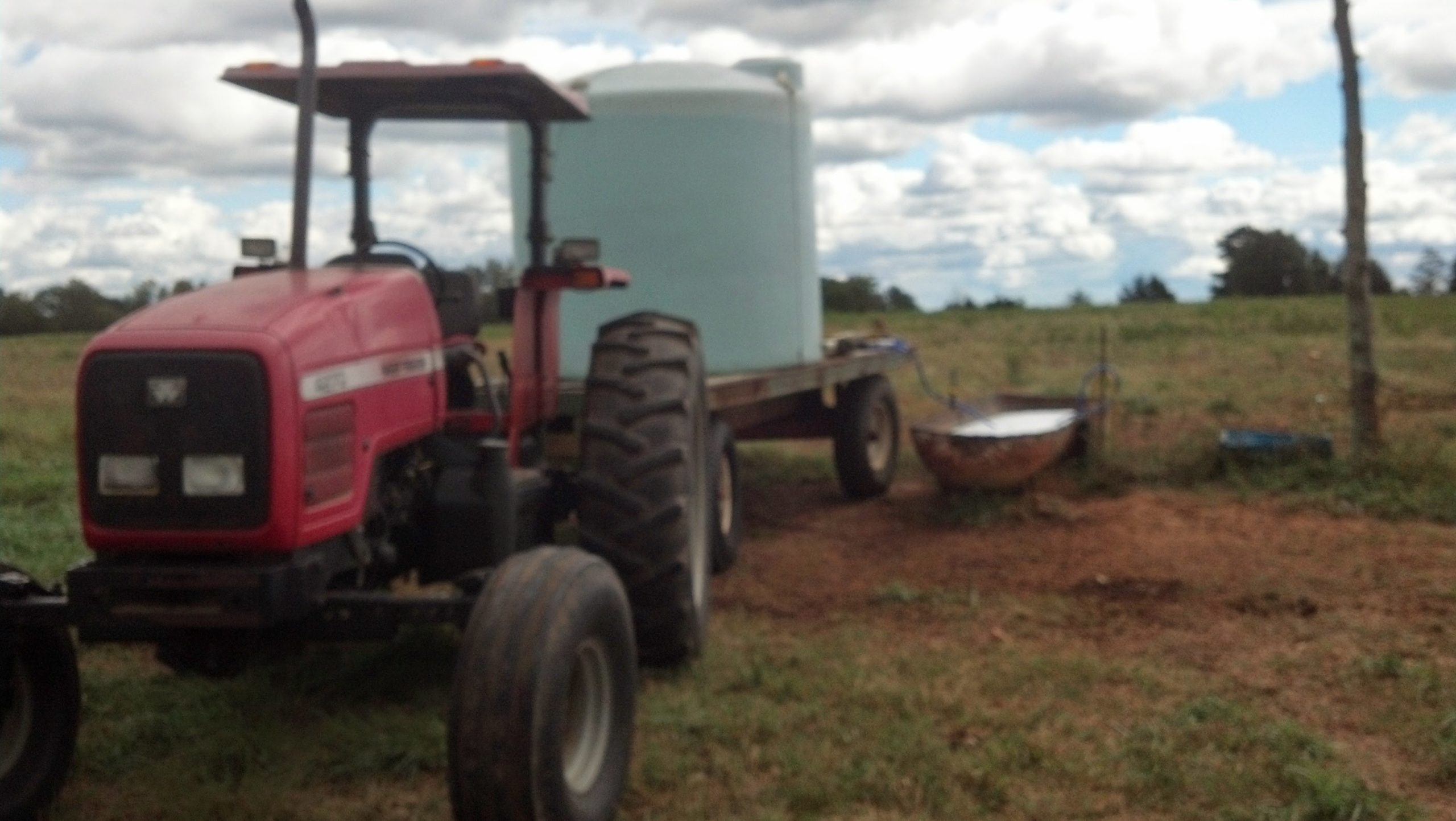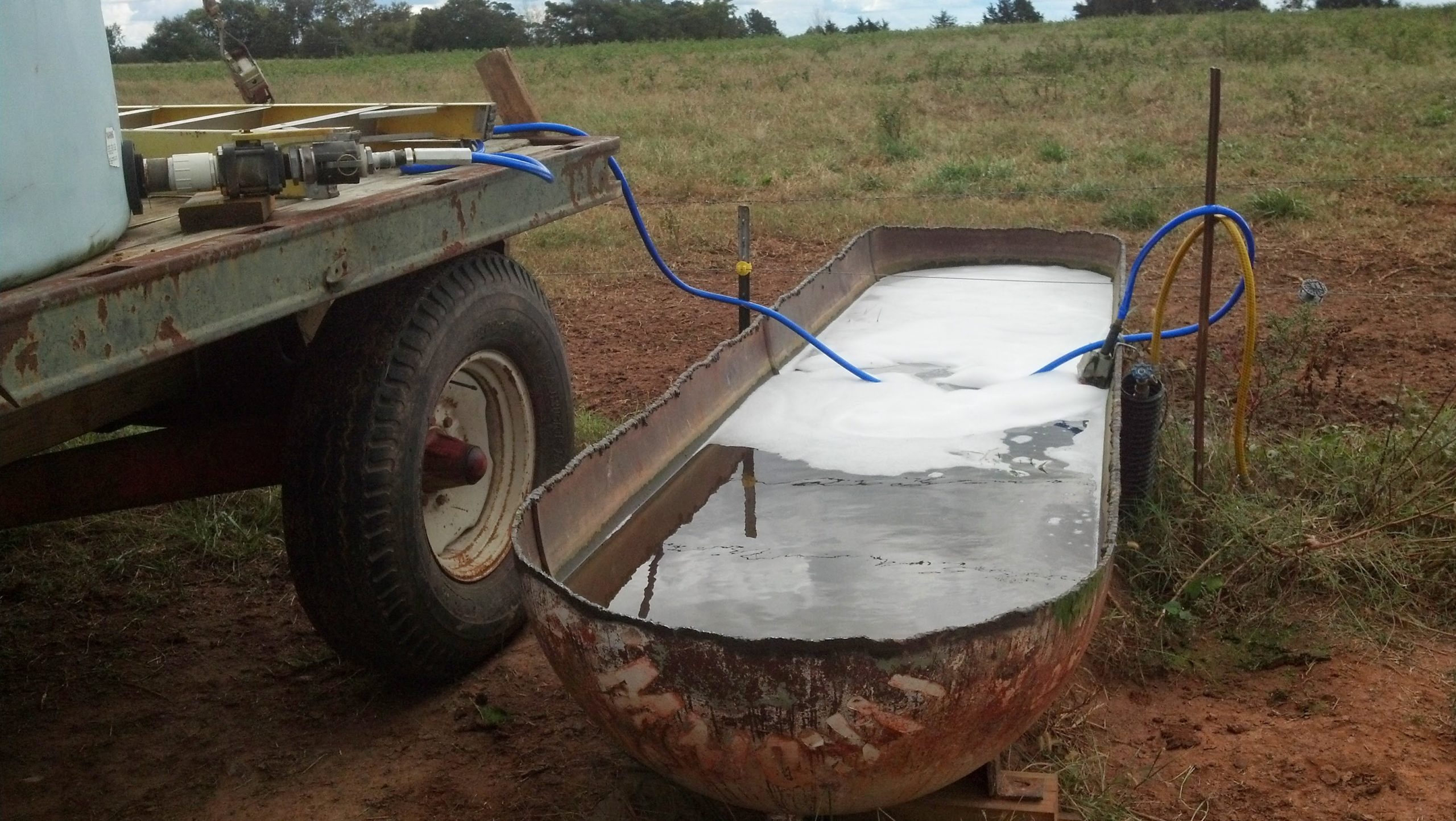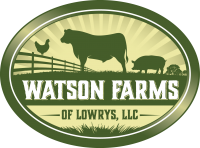Many cattle producers use ivermectin in a pour-on form to deworm their cattle. In our opinion, this is not best as is the case with most chemical approaches in agriculture. Here’s why we don’t do it:
- This method of treatment requires the animal’s flesh to absorb the chemical. When we as grass-fed beef consumers are particularly interested in the wholesomeness of our meat, the last thing I would want is for that meat to be permeated with a harsh chemical. I’m not sure if this method of treatment has any effect on those who eat the meat, but I’d rather be safe than sorry. (If you follow the link above, you can see that the FDA requires a 48-day withdrawal period before slaughter.) Ivermectin also is not approved for use in lactating dairy animals which might tell us something as well.
- It’s much easier to de-worm through drinking water as I’ll explain below.
We use Shaklee Basic H to de-worm our cattle. It is a bio-degradeable, non-toxic soap that has many purposes. We mix about 1.5 cups per 100 gallons of drinking water and use this mix as the cattle’s only source of water for at least two days.
We can treat our entire herd with about 3,000 gallons of water and about 2.8 gallons of Basic H. We don’t have to stress them (and us) by getting them in the corral and putting every one of them through the head-gate which could take a week or more of working cattle non-stop.
This method is also used by Joel Salatin and Polyface Farms, and in my opinion should be used by many other farms both conventional and grass-based.
Here’s some pictures of the setup we use.



Will this kill lungworm?
Wow! So glad for this information! Currently our horses and cows have access to the same water tank has anyone ever tried this on equine?
Yes, works well with horses. We’ve used it for years. We also use ivermectin once year as we had some mixed results. It can take a horse a day and a half to be convinced to drink! They can be stubborn about it..
Do you use the Shaklee basic H original or do you use the basic H 2 the new more concentrated product?
We have milk cows, do you know if this would effect the milk at all or the flavor?
Thanks
Heather
A group of 3 goat farmers in Central Texas has purchased the 5 gallon bucket of Basic H. We thank you for your information. As we have had a really wet year, unusual for this area, worms have been rampant. The average for worming has been 3 weeks due to bottlejaw being in evidence at that point. None of us like the chemical wormers, but that has been the only option until one of us heard about Basic H from our County Tax Appraiser, who runs goats as well as cows. We do hope, and pray, that this will be an answer for our operations.
This is actually an update to the nanasande post of 2019.
We did, indeed, begin on July 1, 2019 to use Basic H as our wormer for the goats. The results were phenomenal, at the very least. We were absolutely consistent with usage as I will describe. Result: No parasites in random fecals tested by our vet since beginning the program in 2019. All participants who followed this protocol found worms were no longer an issue, goat coats became healthy and shiny, and feed requirements to maintain weight were less.
Dosage: (I used a 5 gallon bucket if water to measure how much water my particular containers would hold.)
1 Tablespoon Basic H per 5 gal. water
2 Tablespoons Basic H per 10 gal. water
(1 1/4 cups Basic H (BH) per 100 gallons water)
Make only BH treated water available for the first 7 days of the month, then untreated water for the rest of the month.
Note: this process is only applicable to farms using individual tubs for watering. ***This process cannot be implemented in situations where goats have access to open water bodies such as ponds, lakes, or streams unless the goats can be moved, for 1 week per month, to a confined area in which the only water sources are metal, plastic, or rubber, etc. tubs which hold a specific amount of water and can be treated with BH for the week.
The first full week of each month, treat each available water source with BH. When refilling is necessary, estimate the amount of water needed in that container (ex: half of a 5 gallon tub) and add the relevant amount of BH (ex. 1 1/2 teaspoons) before filling the tub with water which is dispensed from the bottom rather than the top of the container to avoid so much foaming. ***Because goats have a very fast metabolism, we make this water available for a full 7 days. Joel Salatin, who raises cows, only treats water for 2 days with cows due to their having a much slower metabolism and BH staying in the system to do its job much longer. GOATS exposed to treated water for 7 DAYS monthly were successfully rid of parasite infestations.
The most difficult part of this process is convincing folks who have relied on chemicals as a lifeline to battle the parasites to follow this protocol TO THE LETTER and have a little faith that it works. If in doubt, separate out a test herd in a separate pasture and be consistent with the treatment, then do random fecals and see the success. It is amazing.
When I sold shaklee years ago we were told by our bosses that you could use basic h as a dewormer for dogs we put one drop in their water dish everyday every other day whatever. My dog never had worms and the vet said whatever I was doing keep doing it. Is basic h in fact safe for dogs?
We have never used it on dogs, so it sounds like you have more experience than we do on that. I wouldn’t think that it would harm dogs if it doesn’t harm cattle though.
Is it safe for horses and pigs????
Yes, I would think so, but you may want to consult your vet to see what they think as well.